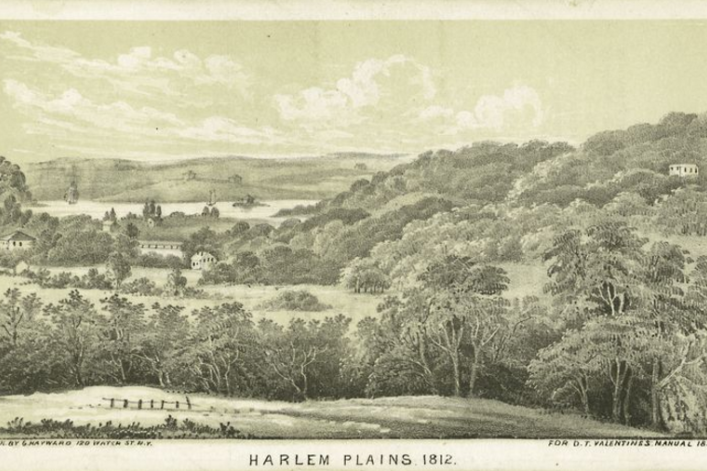An African Burial Ground Uncovered in Harlem Reveals New Clues About Neighborhood History

The excavation of a burial ground in Harlem last summer has upended some previously held beliefs about the neighborhood’s history. When archaeologists found human remains on the site of the former 126th Street Bus Depot, among their discoveries was a skull that appears to have come from a woman of African descent. As recently reported in the New York Times, many historians had purported that Harlem was a predominantly Caucasian area prior to the 1900s, but the bones that were unearthed are from before then.
The Harlem African Burial Ground Task Force, however, has long maintained that people of African descent have been in Harlem for much more than a century. The site at which the bones were found was once occupied by the Reformed Low Dutch Church of Harlem, which, according to the Task Force, owned a plot of land “designated as a ‘Negro Burying Ground’ for the internment of free and enslaved Africans.”
Historian Sylviane A. Diouf, director of the Lapidus Center for the Historical Analysis of Transatlantic Slavery at the Schomburg Center for Research in Black Culture, wrote earlier this week on the New York Public Library blog about the dubiousness of deeming the excavation of the bones a “discovery.” She lays out a timeline of the ground’s origins; the story begins as early as 1658, when Governor Peter Stuyvesant forced African slaves to build a road linking lower Manhattan to the area we now know as Harlem. Later, when the church was built, it created the burial site, where African Americans were interred for centuries.
Diouf reveals the callousness with which the site was repurposed: after the land was sold in 1853, it was paved over and became a casino, then film studios; now it’s MTA property.
“People equate Harlem with the Harlem Renaissance and the Great Migration, which started in 1917,” Diouf says, “and they think blacks arrived in New York precisely during the Great Migration. But the reality is very different.”
In fact, she says, the first non-Native American inhabitant of Manhattan island was from Santo Domingo and of African ancestry. Of the people who were interred in the burial ground, Diouf says they were quite varied in terms of how they lived. Because the cemetery was founded in the 17th century and remained open through 1850, they would have been “Africans in the early years, and later, people who were born here,” Diouf says. “Some would have been enslaved and working for farmers in Harlem. Others were free people, especially after slavery ended in New York in 1827. In terms of social background, some might have been farmers, laborers, domestics, and artisans.”
How the burial ground will be recognized remains to be seen. The Task Force comprises people who want to help memorialize the site, and collaborated with the Hunter College Department of Urban Affairs & Planning to propose several options. Diouf says that a simple plaque would be quick and easy, but for something more elaborate, the process would likely take years in terms of raising money.
She also points out that this burial ground is certainly not the only one like it in the city. Documentation suggests that there is another in the Bronx, and most likely in other locations as well. “African Americans have so little remains of material culture, so that when such a site is found, it’s always very important to understand what was going on and who those people were,” Diouf says. “For the most part, they haven’t left written records, so anything that we can find is very crucial to understand.”
Related:
9 of our favorite historic NYC streets worth exploring






















